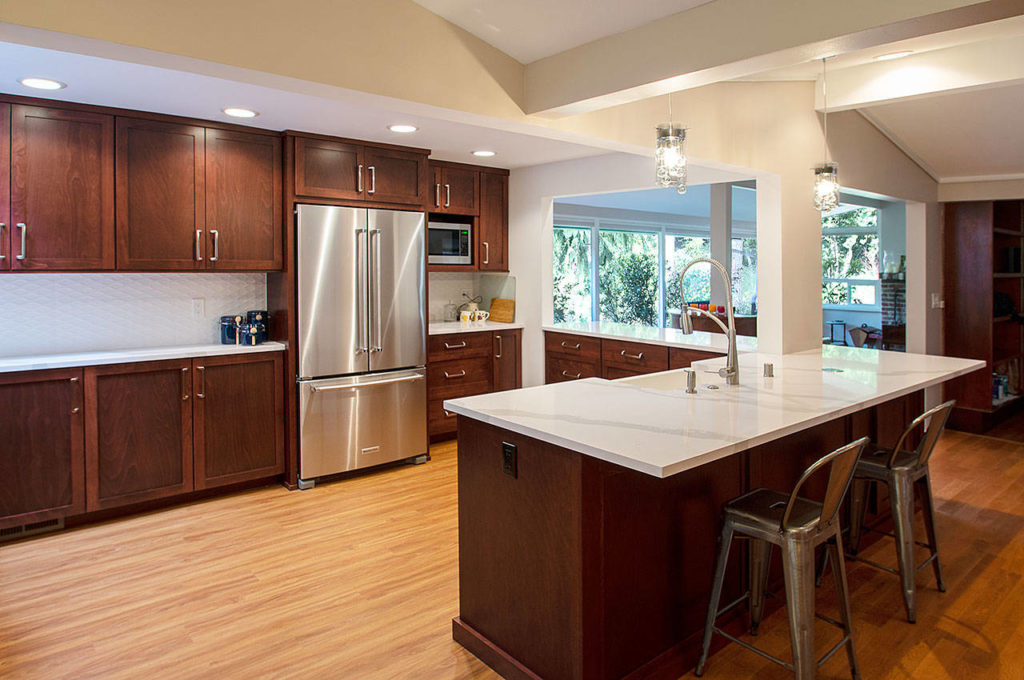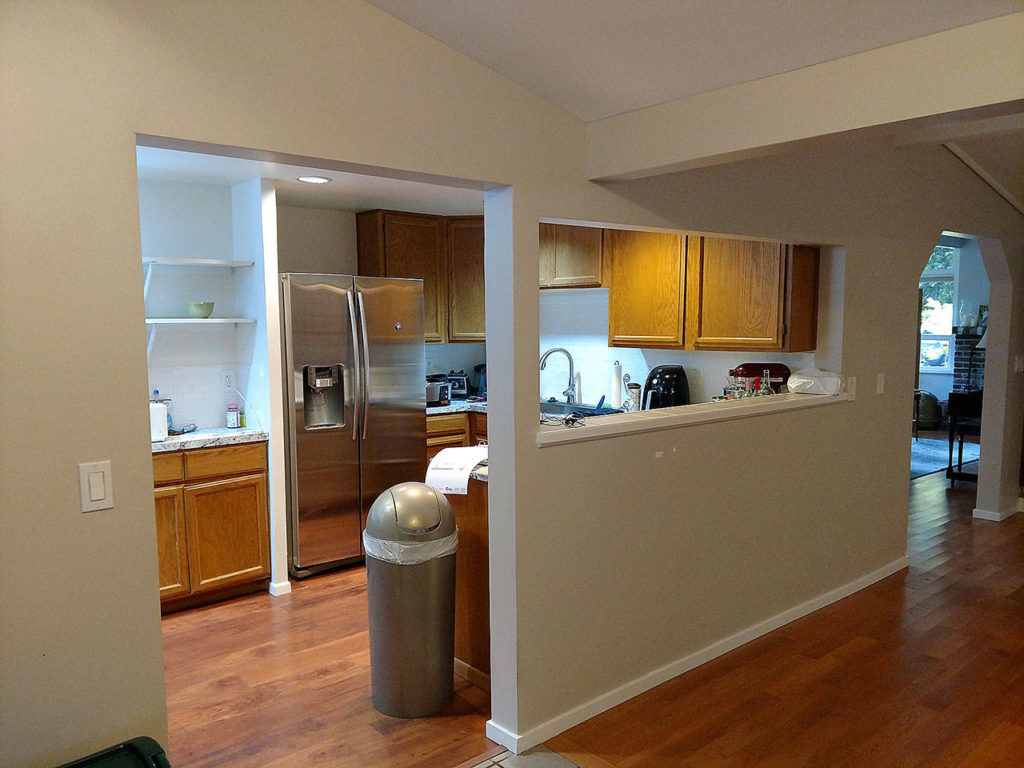We’ve all seen those TV home remodeling shows.
Admit it, it’s put a few ideas in your head, right?
A new kitchen? Ahh, that would be nice.
And isn’t it time for an upgrade or do-over to a bathroom that was built when shag carpeting was a thing?
If such thoughts spark joy within you, get ready for a few reality checks.
First, it’s probably going to cost more than you think after a casual stroll of the aisles in a home store.
Second, it’s probably going to take longer than you think. In short, get ready for some home disruption.
“The biggest task we have, like any remodeler, is to help people understand the scope of the project and your budget,” said Richard Lawrence, marketing manager for Chermak Construction Inc. in Edmonds. “People are shocked at what it costs to remodel now.”
Online checks show wide variations in the projected cost of remodeling projects.
A kitchen remodel, for example, could set you back $20,000 to $80,000, or more, depending on what you want to have done.
Lawrence said he recently priced kitchen cabinets for his own home. “They were $8,000 for the mid-range, and I could easily have spent $18,000,” he said. “People think a kitchen remodel is $2,000 to $4,000. You’re lucky to buy the cabinets for that.”
Extras like taking out a wall to add more space or moving the plumbing add up quickly. “Every little piece you add costs more,” he said.
Remodels are a little more expensive here than in other parts of the country. It reflects the realities of what has happened in the real estate market, Lawrence said. “If the real estate market went up, don’t you think the remodel did, too?”
One option is to break up remodeling projects into pieces, some done now, some later.
Remodeling takes time, often far more than what those living in the home anticipate. “We call it the remodeling roller coaster,” Lawrence said.
A kitchen remodel can take a month or six months, depending on complexity, he said.
Many construction companies have charts or graphs they give to clients depicting the emotions many feel during remodeling — from elation and excitement in the beginning, to the “When-is-this-ever-going-to-be-OVER?” phase as the drywall particles fly and incessant hammering begins, to the “Isn’t this the coolest?” upon completion.
When contemplating a bathroom remodel, consider if it’s a new floor, vanity and sink type project or more complex, like taking out the tub and installing new glass doors and tile.
More comprehensive projects can hit $20,000 and up.
“Tile is expensive, all hand laid,” Lawrence said. As with kitchen projects, if plumbing doesn’t have to be moved, it saves money.
Bathrooms are notorious for “uh-oh” moments of unexpected problems, especially if they are decades-old. Once workers get into the floors or walls “you don’t know what you’ll find,” he said.
Homeowners can ask for a fixed-price agreement on repairs that generally cover everything except the most unexpected surprises.
Design specs spell out exactly what changes will be made, such as the sinks that will be installed or the doors that will be hung.
Remember that local city or county governments have permitting requirements, which also add time to projects. Check their websites to see which projects they require permits for.
Lawrence recalled a conversation he had with someone who works in an architect’s office who told him the most important thing is to educate people on the realities of redo projects.
People watch HGTV shows like “Fixer Upper,” “Property Brothers” and “Kitchen Cousins” and think projects will be done in a few days, he told Lawrence.
If it’s simple stuff, like putting in a vinyl floor over existing tile or installing a toilet “that’s a refresh,” Lawrence said.
When a contractor asks you questions about a project — such as its size, scope and your budget — be honest, he advised.
And remember that more complicated projects can take two, three or four months to complete. Do some checking on the company doing the project. Workers will be in your house all that time.
“You better like them,” Lawrence said.
One more thing might be handy to keep stowed in your back pocket: retaining a little humor for the normal ups and downs that come from the beginning to end of such projects.
Remember, it’s a roller coaster ride.
How to find a contractor
There’s one piece of near-universal advice for anyone contemplating a home remodeling project — do your homework.
Homeowners seem to be following that advice. The No. 1 reason Western Washington consumers went to the Better Business Bureau’s website was to find information on general contractors, said Tyler Russell, marketplace manager for the organization’s Northwest and Pacific region.
The website has information on a number of member businesses, such as how long they’ve been in business as well as verified customers reviews. People can see the details of any complaints and how the company responded, he said.
Don’t be lured into signing a contract for a “today-only” special.
“It’s usually a sales tactic to get you to put down a deposit,” Russell said. “They don’t want to give you an opportunity to do your research, which we encourage everyone to do.”
Here are some other tips he suggested:
• Get references from recent customers and ask them what they did and didn’t like about a particular contractor.
• Get everything in writing, including a detailed description of the work, costs of permits, and start and completion dates.
• Be sure to have deposit amounts, payment schedules and guarantees for the quality of work and materials documented.
• Ensure that the contractor has the requiring permits from the city or county and a commitment to obtain them as part of the job.
“Compare three to five contractors,” Russell said. “Our No. 1 thing is do your research.”
The Better Business Bureau’s website is www.bbb.org.
Sharon Salyer: 425-339-3486 or salyer@heraldnet.com.
Talk to us
> Give us your news tips.
> Send us a letter to the editor.
> More Herald contact information.



























